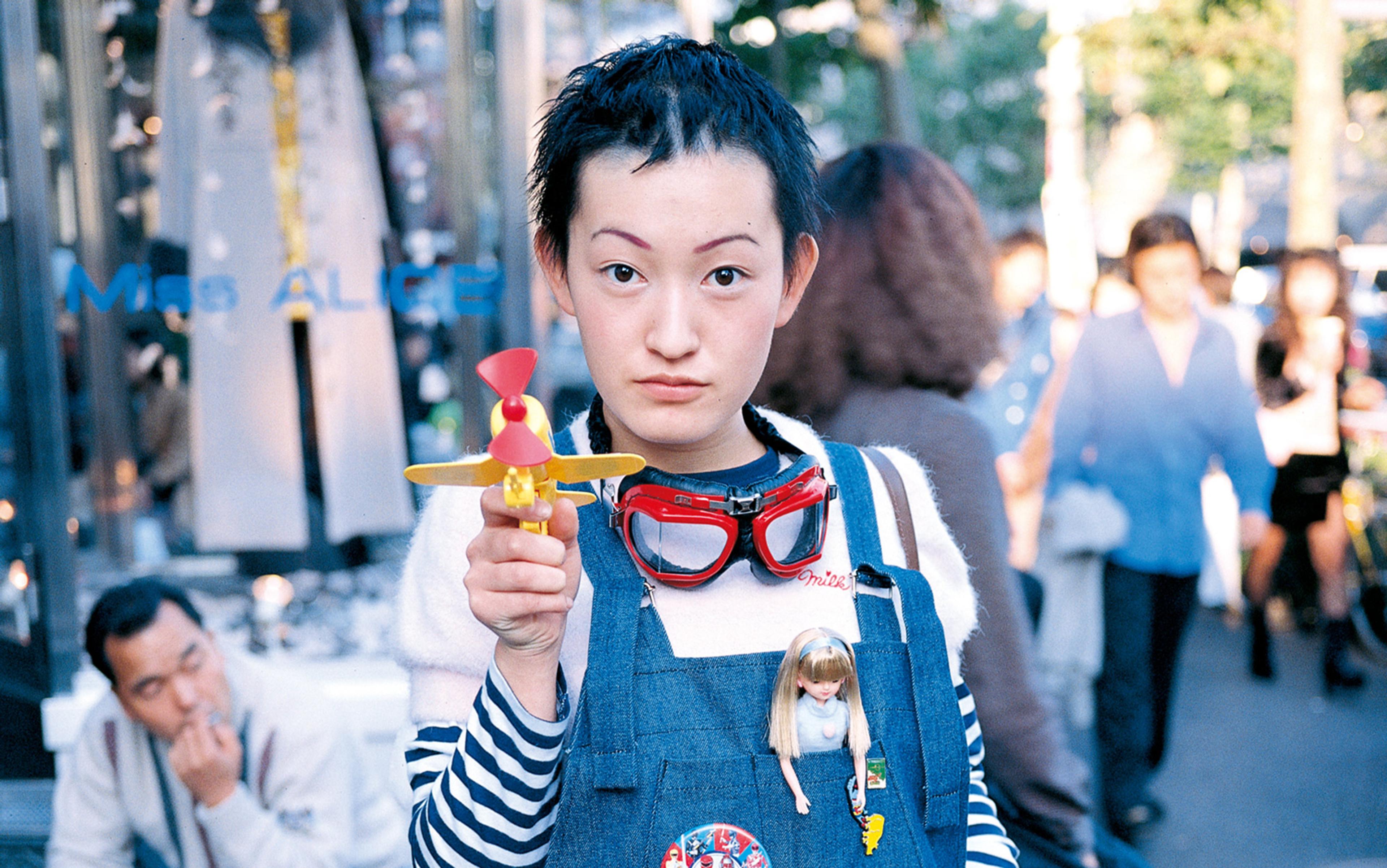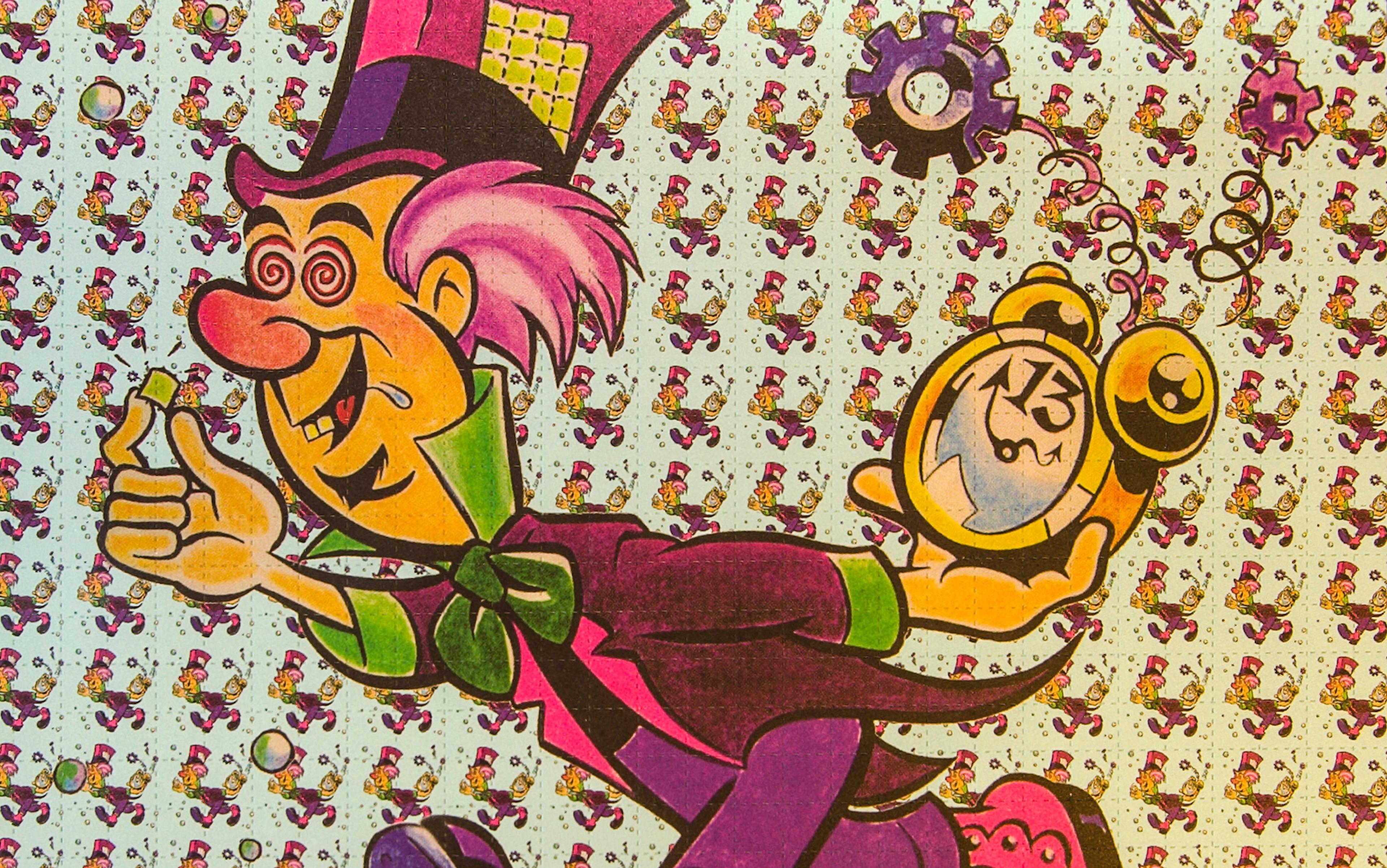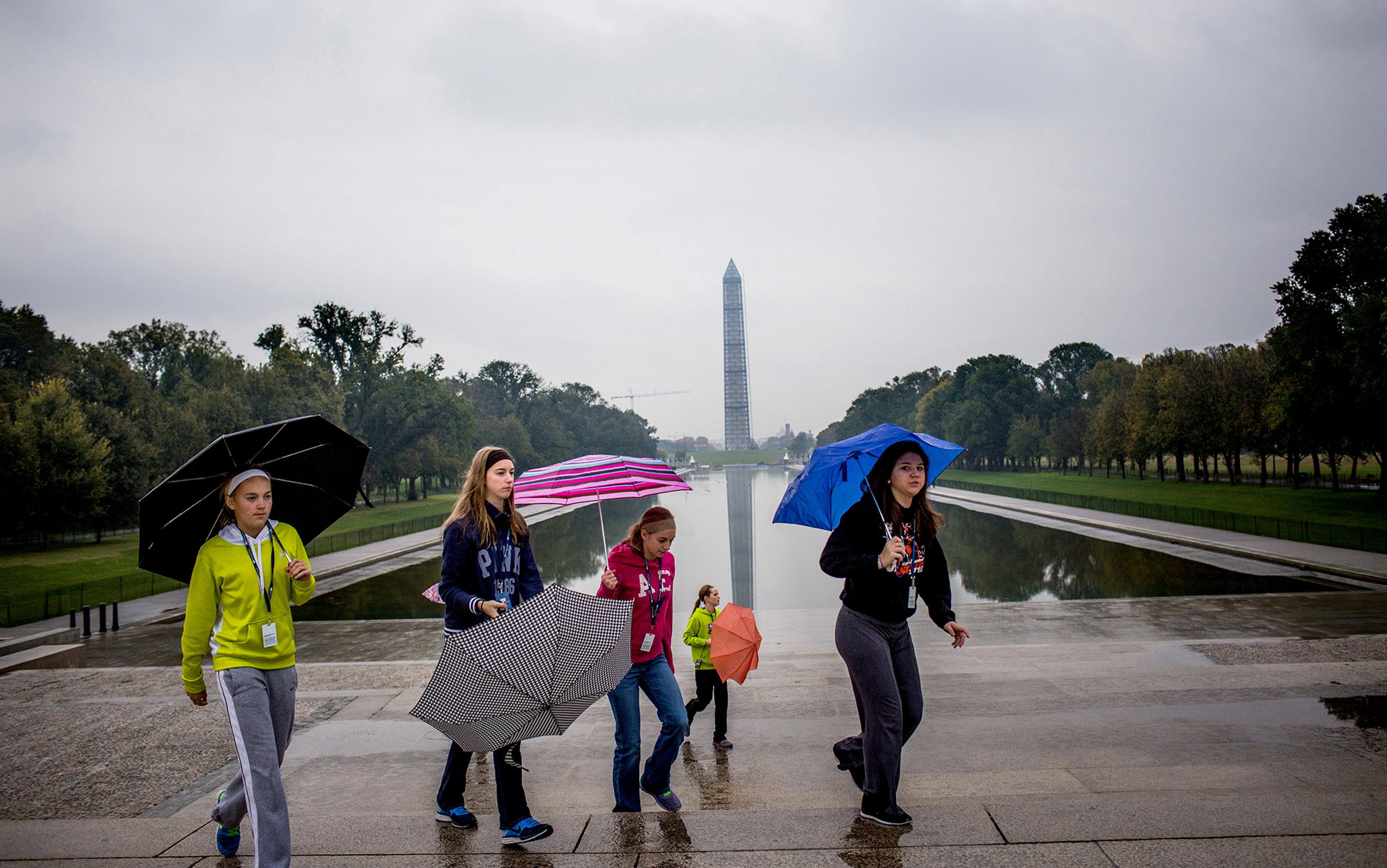These are trying times. People are working harder and earning less. They’re buffeted by terrifying headlines and grim predictions. They’re having less sex and living with parents longer. And they’re burrowing under weighted blankets and escaping into the childish comforts of colouring books (or the fairytale fantasies of corporate theme parks and video games). If life in the 1930s was marked by a Great Depression, and the 2010s by a Great Recession, one might say our current decade is marked by a Great Regression. This return to childhood manifests in the things we consume, in how we spend our time, even in the ways our societies are governed.
Is this a crisis? Or just more of the usual intergenerational grumbling, as when Joan Didion scathingly critiqued the foibles of young Boomers in the 1960s? ‘We were the last generation to identify with adults,’ she declared of her own Silent Generation. In time, the Boomers set upon Generation X, portraying them as slackers. Then, adults of all ages dumped on Millennials for being entitled, oversensitive ‘baby-people’. Inevitably, Gen Z now finds itself in the same crosshairs. But this time, at this moment in history, things feel different. The Great Regression cuts across generational lines and national borders.

Tokyo, April 1997. Photo © Shoichi Aoki/FRUiTS magazine
Critics claim that ‘Britain Is A Nation Of Kidults’ (Female First website, 2012), and that the United States is experiencing a ‘Peter Pandemic’ (The Baltimore Sun, 2004), even going so far as to lament ‘The Death Of Adulthood In American Culture’ (The New York Times, 2014). And they’re right. Grownups around the globe really do seem to be eschewing the trappings of adulthood in favour of constructing second childhoods for themselves. But where the critics are wrong is in their assumptions that the Great Regression is a crisis – or worse.
It’s easy to assume the worst of the Great Regression, for Western societies have long treated the idea of infantilisation with unalloyed contempt. By traditional standards, the rise of childish sensibilities represents dysfunction and danger, a rejection of autonomy, a mental illness or even a society-wide sickness. A true man, as the Bible admonishes, is expected to ‘put away childish things’. In the agrarian and industrial eras, when self-sufficiency and production were the orders of the day, who was less competent and less productive than a helplessly dependent infant? In the 19th century, Alexis de Tocqueville, author of Democracy in America (1835-40), described how despotism strives to keep subjects in ‘perpetual childhood’. At the turn of the 20th century, Sigmund Freud re-framed regression in psychological terms, defining it is as self-sabotage resulting from unresolved trauma. Even in decidedly more youth-friendly modern times, acting younger than one’s age is treated as shameful. It’s why rebukes such as ‘Grow up!’ and ‘Don’t be a baby!’ retain their sting.
It’s tempting to frame the Great Regression as a reaction to the unique confluence of crises that have affected Western nations in the 21st century – a byproduct of the profoundly unnerving decade we are living in. But our global second childhood has roots that extend far back before the appearance of COVID-19, the divisive populism of the 2010s, or even the Lehman Brothers bankruptcy of 2008. In the 1990s, a precursor to our contemporary Great Regression emerged in a certain nation decades before it did in the rest of the planet. That nation is Japan, and its experiences suggest that when the youth and young adults of a hyper-connected post-industrial society lose faith in the future, a Great Regression is inevitable.
To critics who see the adoption of childish sensibilities among adults as a kind of social disease, this might seem a grim conclusion. But Japan’s experience implies a startling corollary. Under the right circumstances, regression can nourish. It can be a form of progression, a form of experimentation and creative play. It can pave the way for new ways of thinking and living. It can spawn new trends and identities and lifestyles. These become essential tools for navigating the strange new frontiers of modern life – and, as we adopt them, they transform our definition of what it means to lead healthy ‘adult’ lives.
Shattered by the Second World War, Japan re-engineered itself during the 1960s into an economic tiger. By the 1970s, it had become the planet’s second-largest economy, thanks in large part to a series of cheap and increasingly well-made Japanese products that swept the globe: first, transistor radios; then televisions, home appliances and cars. Japan’s surprise success inspired derision at first, denigrated as the product of ‘a nation of workaholics living in rabbit hutches’, as a European Economic Community report condescendingly put it in the late 1970s. But as the designs of Sony, Honda, Toshiba and other manufacturers disrupted local industries, ‘Made in Japan’ morphed from joke into threat, becoming an open challenge to the unquestioned assumption of European and US hegemony. It was delivered by a workforce of ‘salarymen’, the Japanese term for a white-collar office worker. Their work was portrayed less as an occupation than an aspirational calling, one positively radiating adult responsibility, competence and machismo. In the 1960s and ’70s, when Japanese schoolboys were surveyed about what they wanted to be when they grew up, ‘salaryman’ inevitably topped the lists.
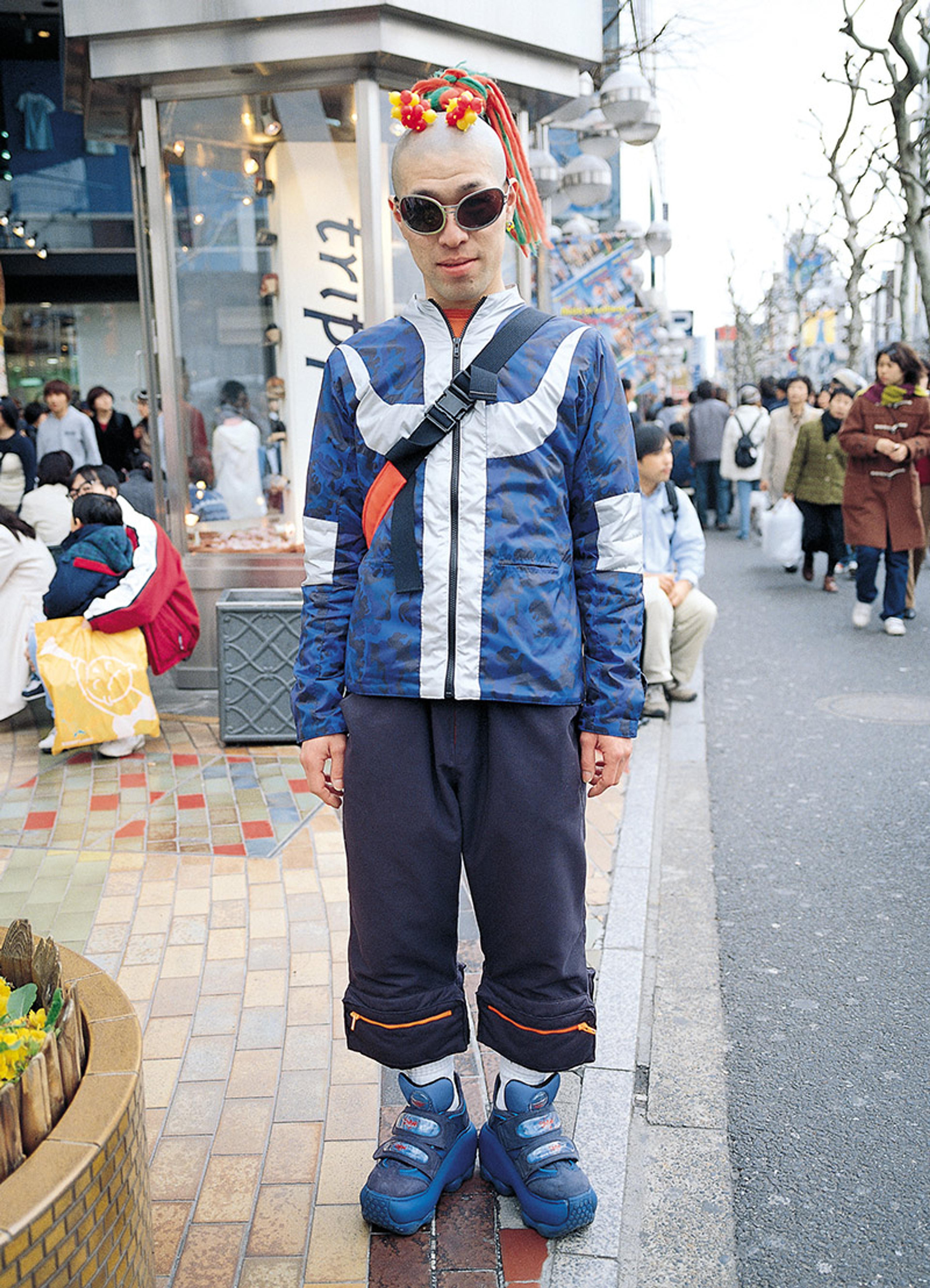
Tokyo, April 1999. Photo © Shoichi Aoki/FRUiTS magazine
For a good while, this culture of unabashed workaholism paid off. By the 1980s, at the peak of the Japanese economy, the leisure lives of newly flush citizens sparked envy around the world. Tourists travelled the globe in huge numbers, staying in the toniest hotels and shopping at the best places. ‘I’m Japanese,’ explained a woman to The New York Times in 1989 of the fawning treatment she received in Fifth Avenue boutiques. ‘I can see it in their eyes: twinkle, twinkle, some money.’ At home, the nouveau riche sprinkled their afternoon coffees with gold dust, collecting fine art and luxury cars like so many Pokémon. On the corporate front, ostentatious purchases by Japanese firms of US jewels such as the Pebble Beach golf course in California, the Rockefeller Center in New York, and Columbia Pictures further inflamed resentment, prompting furious claims of an ‘economic Pearl Harbor’.
By the end of that decade, it was not uncommon to see footage on the nightly news of aggrieved Americans smashing Japanese products in stunt-protests of one kind or another. Black-suited salarymen emerged as the go-to bad guys in Hollywood movies, often set in US locales framed in threatening Japanese-language neon. The dark pinnacle of the phenomenon is still Rising Sun (1993), a film of unmitigated racist demagoguery masquerading as Hollywood entertainment (though I retain a soft spot for hearing Sean Connery bark out fractured Japanese in his chewy Scottish brogue). Unperturbed by the kerfuffle abroad, Japanese people ploughed their ever-growing corporate bonuses into local real estate, lofting their nation’s fortunes to even greater heights. For a moment at the end of the 1980s, the Japanese property market was worth four times that of the entire US, and the grounds of the Imperial Palace in Tokyo – a patch of land the size of Central Park in Manhattan – were more valuable than all the land in California. In 1991, pundits projected that Japan was on track to overtake the US as the world’s largest economy by the early 21st century. Japan’s economic ascendency seemed all but assured.
Shattered dreams led to some of the highest suicide rates in the industrial world
But that same year, the nation’s economic ‘bubble’ burst. The ballooning stock market sputtered, then crashed, dragging down the real-estate market with it. Stagflation set in, choking Japan’s once-enviable growth to a trickle. Many citizens found their investments totally underwater. A series of ineffectual prime ministers shuffled through the halls of its parliament, unable to effect any meaningful change. US politicians stopped dropping by on their tours of Asia. ‘Japan, Inc’ was out of business. As the nation surrendered treasured manufacturing industries to eager rivals in China, Korea and Southeast Asia, dreams of global and even regional dominance evaporated. Japanese economists now refer to the entirety of the 1990s and 2000s as their nation’s ‘lost decades’.
But the depression wasn’t merely financial; it was emotional, too. Shattered dreams led to some of the highest suicide rates in the industrial world. Companies scaled back their ambitions, and graduates who had entered university expecting lifetime employment now faced what locals ruefully nicknamed ‘the hiring ice-age’. A lexicon of new terms erupted to describe previously unknown social ills. ‘Parasite singles’ continued living with their parents well into adulthood, dumping their pay checks into fashion gear and clubbing rather than planning for the future. ‘Hikikomori’ dropped out of society altogether, refusing work or education and rarely leaving their homes. ‘Freeters’ were those forced to flit among part-time jobs for the entirety of their careers – a precursor of the gig economy. And then there’s ‘karoshi’, a chilling word for being literally worked to death by one’s employer.
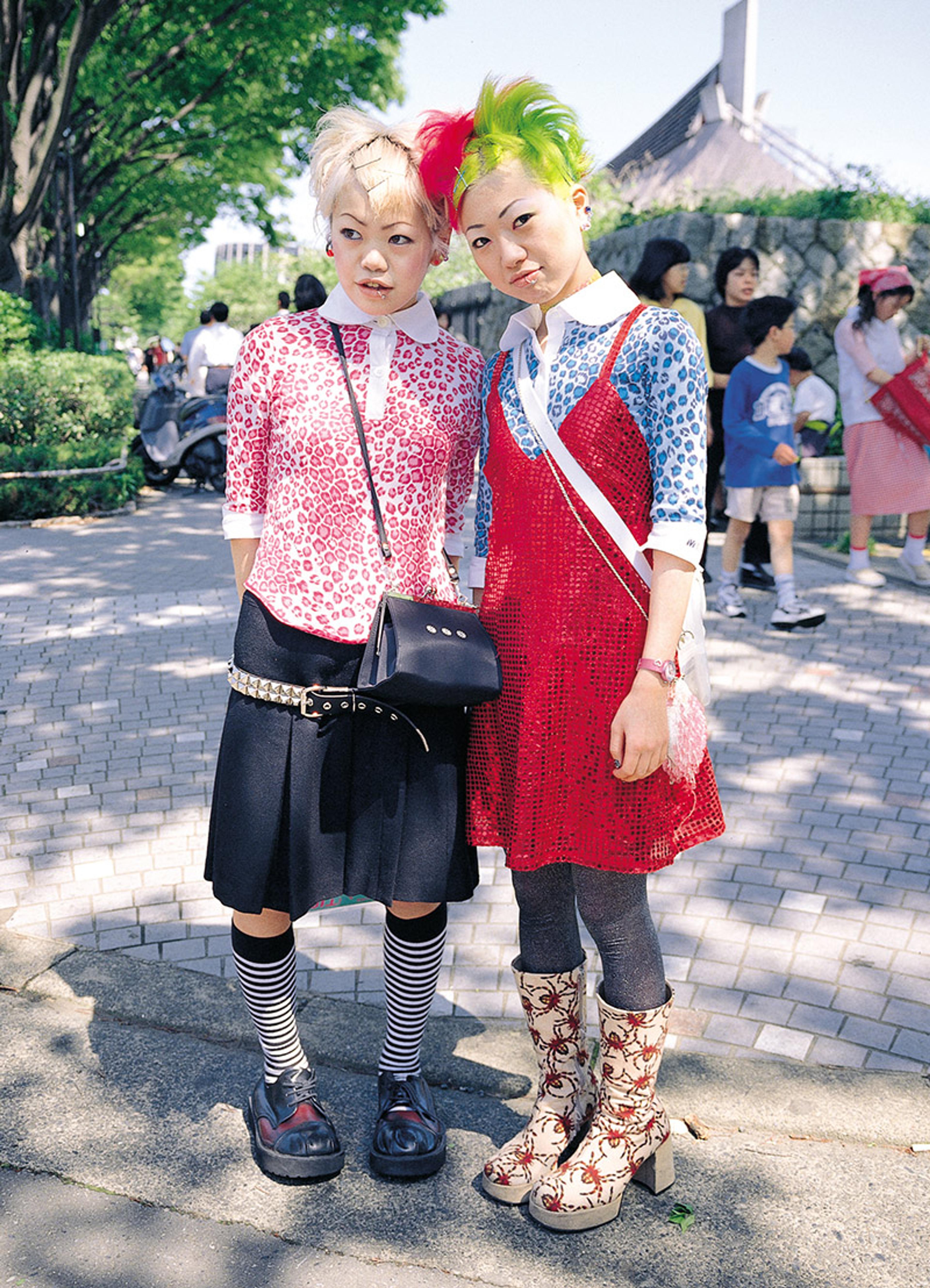
Tokyo, May 1999. Photo © Shoichi Aoki/FRUiTS magazine
Yet as Japan’s economy imploded, its pop-cultural fantasies exploded. I lived there for a year during the mid-1990s and saw a very real transformation in the ambitions and lifestyles of young Japanese. In the US, I’d been presented with an image of those faceless ‘salarymen’ marching in lockstep – the frontline soldiers in an economic war between East and West. But on the streets, things were different.
For one thing, it was now a lot harder for young men to become responsible adult salarymen. A great turning-inward was already underway, as people stopped travelling abroad or even far from home. In arcades, where I spent more time than I probably should have as a student, I found a population of adults who had wholeheartedly embraced video gaming as a pastime. In Tokyo’s fashion districts of Harajuku and Shibuya, I encountered grownups sporting wild fashions or even full cosplay in public. New consumer patterns reshaped entire neighbourhoods; Akihabara, Tokyo’s electronics district, was rapidly pivoting from hardware to software, catering more to the fans of games and cartoon characters than to the needs of traditional customers seeking radios, cameras and TV sets. And at anime and manga conventions, mass-gatherings of adult fans appreciated games and cartoons not simply as entertainment but as critical elements of their lifestyles and identities.
Japan’s women could make or break entire industries by following supposedly ‘childish’ impulses
This was more than niche subculture. Throughout much of the 1990s, Japan’s most popular comic magazine, Weekly Shōnen Jump, sold 6 million copies a week. In 1995, a quarter-million attendees thronged the biggest fan convention, Comic Market, making it the largest fan gathering of any kind in the world. But at the time, mainstream Japan disparaged these hyper-consumers of pop culture as ‘otaku’, meaning someone who focuses on their hobbies to the detriment of everything else in their lives. The irony was that, amid a desperate push to promote consumer spending in the 1990s, the otaku were among the last ones still seriously consuming. Nevertheless, social critics excoriated them for buying the ‘wrong’ things, which is to say things not befitting adults: games, cartoons, comic books.
Salarymen may have built Japan, Inc but, when it crumbled, young people picked up the pieces. The real trendsetters were young women, ranging from schoolgirls to ‘office ladies’, the female counterparts of the salarymen. They began unabashedly incorporating symbols of feminine childhood into their adult identities, upending entire industries through the power of ‘kawaii’, a Japanese word that overlaps with ‘cuteness’ but which is also a state of mind that refers to being adorable, playful, just begging for cuddles, like a kitten – or a baby. By 1992, one women’s magazine anointed kawaii ‘the most widely used, widely loved, habitual word in modern living Japanese’.
Over the course of the decade, a new crop of hypercute pop idols eschewed sex appeal for childishly high-pitched voices and juvenile fashions. Young women embraced Hello Kitty, that icon of childhood innocence, as an ironic symbol of togetherness and girl power. They co-opted pocket pagers, designed for businessmen, into makeshift mobile texting devices to stay in touch with girlfriends using elaborate numerical codes. They repurposed photobooths, intended for printing thumbnail portrait stickers for business cards, into selfie machines, compiling literal face-books of their friends. And when the first popular mobile internet service debuted in Japan in 1999, years before it would take off abroad, they pioneered the basis for a whole new online argot: emoji.
Collectively, Japan’s women could make or break entire industries by following supposedly ‘childish’ impulses. In 1990, Sanrio – the company behind Hello Kitty – had been deep in the red; by 2000, the firm was worth more than $1 billion. And when Apple launched the iPhone to great fanfare in 2007, it proved an instant hit everywhere in the world – except Japan, where emoji were not initially included in the operating system. Such was the power of kawaii sensibilities during Japan’s lost decades.
For many years after the bubble burst in 1991, it was assumed by US analysts that Japan’s socioeconomic trajectory represented a wild outlier. The rosy, it-could-never-happen-here mindset was driven by assumptions of US exceptionalism and the fact that Japan’s cultural developments seemed to track so differently from those of Western rivals. But that was all about to change.
In the early 1990s, I was an American high-schooler, an avid Lego builder, a collector of toy robots, and reader of comic books. I suspect many of my high-school classmates shared some of these interests, too, but few of us ever talked about these proclivities on campus. Toys and comics were intended for children. Publicly, we maintained a singular, obsessive focus on passing through what we imagined were the doorways to adulthood in middle-class US society: getting a driver’s licence, having a first kiss, drinking a first beer. We coveted these things because they offered thrills, of course, but because they also signified freedom and independence. Back then, the baubles of adult life – cars and dates, careers and homes – sparkled all around us, enticingly within reach. The economy was booming, and even college dropouts were founding multimillion-dollar tech companies. The future was ours for the taking.
In theory, anyway. I was a Japanese-language major who had the misfortune of graduating from university in the mid-1990s, precisely when the Japanese economy was tanking. Unable to find a job that paid well enough to live on my own after getting my degree, I spent several years back at home, living with my parents. Today, I view this moment through the rose-tinted lenses of middle-aged nostalgia: the last time in which we’d all be together as a family, still young and healthy. But back then, I saw things differently. Perhaps it’s only in the affluent first world that someone would think of having an education, a safe roof over their head, and three square meals a day in gloomy terms. But I saw living at home as a humiliating personal failure.
The most searched term on PornHub in 2021? ‘Hentai’: a word for erotic cartoons, borrowed from Japan
Really, though, I was just ahead of the curve. In 2020, a Pew study revealed that more than half of 18- to 29-year-old Americans were living with their parents. Saddled with student debt, stagnant wages and out-of-control housing prices, many Millennials have returned to the nest – less for comfort than for survival. And now they, like the Japanese youth of the lost decades, bear the brunt of criticism for the ‘kiddification’ of modern adult sensibilities.
Examples of this kiddification can be found everywhere once you start looking. Grownups pepper their online conversations with emoji and kidspeak, like ‘adulting’ and ‘besties’, sounding suspiciously like those pioneering Japanese schoolgirls of decades past. More adults read young-adult novels than the tweens and teens for whom they were ostensibly written. In Hollywood, sex scenes are out; heroes based on cartoon characters and toys dominate the box office. Hyperfans known as ‘stans’, whose lives revolve around their favourite celebrities, have roiled social media, the music industry and even US politics. The investment world has been hijacked by NFT cartoons of apes, while Christie’s auctions NFTs of kawaii characters called ‘fRiENDSiES’. At the literal end of the spectrum is ‘kidcore’, a retro aesthetic inspired by children’s clothing that is making inroads on fashion runways. And the single most searched term on PornHub in 2021? ‘Hentai’: a word for erotic cartoons, tellingly borrowed from Japan.
In the 2010s, pundits in English-language media devised or repurposed many neologisms to describe those grownups who were indulging in this un-adult behaviour, including ‘rejuveniles’ (as Christopher Noxon put it in 2006), ‘adultescents’, and ‘kidults’. The psychologist Jean Twenge, in her book iGen (2017), described those born after 1995 as ‘less rebellious, more tolerant, less happy – and completely unprepared for adulthood’.
Such descriptions frame the regressive tastes of the modern young adult as a counterproductive retreat from reality. Counterproductive, the reasoning goes, because kiddie sensibilities do not prepare an adult for the ‘real world’. But this is wrong. Embracing our childish sides is a direct response to the ‘real world’ – to the stresses of pandemic, climate change, social media and political strife. This isn’t retreat; it creates entirely new ways of interacting with reality that can lead to profound change.
Take, for example, that bastion of kids’ play, the Danish toymaker Lego. In the 90 years since its founding, Lego has grown from a regional manufacturer of building blocks into one of the world’s most powerful multimedia brands, described in a 2021 survey as outclassing the Amazon and even Disney brands. Lego’s startling success is due to adults – not the ones in the boardroom but its legions of grownup customers.

‘Everyone is Awesome’. Photo © Lego
Although originally founded as a purveyor of playthings for children, in recent decades the company has aggressively shifted to target adult fans of Lego, or AFOLs as they call themselves. In the summer of 2021, the firm opened an opulent new flagship store in New York City. It was designed specifically with grownups in mind, providing spaces for AFOLs to chat with staff and each other about new prototypes and ideas. The input of these adult aficionados has in turn prodded Lego out of the playroom and into the sociopolitical realm. Recent initiatives have included supplying the Chinese human rights activist Ai Weiwei with bricks for a project commemorating student activists reportedly killed in Mexico in 2014, and the release of a set designed specifically for the LGBTQIA+ community called ‘Everyone Is Awesome’. The transformation of Lego from a child’s toy into an adult pastime, identity and even tool for political action is more than just a business success story. It’s a symbol of our changing times.
Lego is actually something of an outlier. Other industries have had far less success grappling with the childish tastes of the latest crop of adults. Critics have blamed Millennials and Gen Z for ‘killing’ once-flourishing industries such as shopping malls and casual dining chains, not to mention the flow-on effects of plunging birth rates around the globe, such as growth being throttled by having fewer workers, consumers and taxpayers.
But as the legendary Midcentury Modern designer Charles Eames put it, ‘toys and games are the preludes to serious ideas.’ Grownups who play with Lego, dump fortunes into JPEGs of cartoon characters online or dress like overgrown toddlers force us to question long-held assumptions about adulthood and society as a whole. They blur seemingly fixed boundaries between old and young, between work and play, between male and female, between those who are allowed to make rules and those who should be compelled to obey them. And that can be deeply troubling to those more comfortable with the status quo.
In his book The Vanishing American Adult (2017), the conservative US senator Ben Sasse claims that ‘our coming-of-age crisis’ is due, in large part, to the ‘moral hollowing’ of removing religious education from public school curriculums. Sasse is also an outspoken opponent of a woman’s right to reproductive choice and of same-sex marriage. Traditional boundaries make life simpler; they’re also easier to control.
To progressive critics, on the other hand, regression can seem a downright existential threat. In his bestseller Fantasyland: How America Went Haywire: A 500-Year History (2017), the US writer and radio host Kurt Andersen blamed what he dubbed ‘Kids “R” Us Syndrome’ for eroding the very fabric of reality, ‘making it seem more and more okay for make-believe to leach into real life.’ Andersen links this directly to the rise of Trumpism.
Is regressive behaviour a tacit acknowledgement that the future isn’t as rosy as it used to be?
In some ways, this makes sense. Observers began lamenting the disappearance of the ‘adult in the room’ from almost the first moments Donald Trump took power in 2016. This is a man who literally flings food when piqued. To many, the symbol of that presidency remains one of a giant baby, bobbing above the mayhem sown by divisive politics. And who’s down in the morass below? Among the instigators of the attack on the US Capitol in January 2021 were cosplayers and comic-book fans, ring-led by a group who tellingly call themselves not the ‘Proud Men’ but the Proud Boys. This may have been regressive, but it wasn’t a rebellion against the strictures of adulthood. Their siege was a rebellion against diversity, feminism, equal rights and all the other strides that marginalised groups have made in US society – a rebellion expressed through the adult equivalent of smashing another kid’s towers of blocks rather than building anything of their own.

Photo courtesy Jon Viscott/Flickr
By framing the embrace of childish sensibilities purely as a moral failing, and lumping all forms of it together, critics like Sasse and Andersen miss two important points. One is that there is a nourishing form of regression that harnesses the playfulness, creativity and diversity of childhood, but there is also a destructive form that manifests as blind rage. Both forms of regression are fuelled by a certain disappointment with society. Both crave the creation of something new. But one delights in transgressing boundaries through play, while the other polices boundaries through hate and violence. The other point that critics often miss — an arguably bigger mistake — is confusing cause and effect. Did the Great Regression really lead to an erosion of reality? Or is regressive behaviour a tacit acknowledgement that the future isn’t as rosy as it used to be? After years of economic, social and political chaos, the light at the end of the tunnel seems to have extinguished altogether. ‘We have no future because our present is too volatile,’ wrote William Gibson in the prescient novel Pattern Recognition (2003). ‘We have only risk management.’
It is this precarity, more than immaturity, that explains why adults are less eager to go out shopping, drinking, dating, or to buy homes or start families. According to one study, US millennials are earning 20 per cent less than Boomers did at the same age, while prices for nearly everything, from education to eggs, have skyrocketed. And this was before the COVID-19 pandemic made life altogether harder for everyone. ‘After swaddling myself in nostalgic comforts and babying my brain through three consecutive lockdowns,’ wrote the journalist Olive Pometsey in GQ magazine in early 2021, ‘I’ve noticed that the inner child is now the outer person.’
Insecurity is what channels people of all ages into fantasies: some gentle, others dark and conspiratorial. Stuck indoors, crushed by loneliness, barraged by terrifying headlines 24/7, feeling abandoned by our political institutions, our only succour are the pacifiers of streaming entertainment and the dopamine drip of social media and ‘infotainment’. Our current moment can feel downright dystopian.
You may assume that this is where the comparison with Japan falls apart. But our ‘dystopian’ present eerily mimics the sense of unease shared by many Japanese people at the turn of the millennium. As critics grappled with just what had gone wrong during the 1990s, criticism of young Japanese intensified in ways that echo the concerns of Andersen and others. Bookstores in Japan filled with provocative-sounding titles such as Parasaito Shinguru no Jidai (1999) or ‘The Age of Parasite Singles’, Keitai wo Motta Saru (2003) or ‘Monkeys With Cell Phones’, and Chikagoro no Wakamono ha Naze Dame Nanoka (2010) – ‘Why Are Young People These Days so Useless?’
The Japanese weren’t weird at all. They had simply gotten to the future a little ahead of other nations
Few of these critics – would-be keepers of the social order – acknowledged older generations’ complicity in creating the economic environment that prompted so many young adults to veer from the path of tradition. ‘Japanese companies are wasting the young generations to protect older workers,’ complained a 30-something autoworker to The New York Times in 2011, having left his company after 10 years of being consigned to part-time work. Even more to the point, the critics also completely missed that, amid Japan’s ongoing sociopolitical apocalypse, those ‘monkeys with cell phones’ weren’t actually monkeying around. They were in the process of forging entirely new lifestyles better suited to the strange new world that old folks had left them. Young people weren’t really escaping into fantasies; they were cannily adapting to a harsh new reality.
Not all critics of Japanese youth were Japanese. Plenty of foreign pundits piled on as well. In the 1990s and 2000s, reporters around the world eagerly mined Japan for laughs, hyper-focusing on trends such as adults who indulged in video gaming, or profiling their supposed disinterest in typically ‘mature’ pursuits such as careers and cars. However, when these exact same trends began manifesting abroad in the 2010s, it became obvious that the Japanese weren’t weird at all. They had simply gotten to the future a little ahead of other nations, societally speaking. In 2009, NPR, Reuters and other outlets published a raft of stories about the purported sexlessness of many young Japanese. A decade later, in a popular essay titled ‘Why Are Young People Having So Little Sex’ (2018), Kate Julian, senior editor at The Atlantic, declared that it was the Americans who were now in the midst of a ‘sex recession’. Echoing the experiences of young adults from Japan’s lost decades, adults around the world are hitting key milestones of adulthood later than previous generations – and unwittingly incorporating the fantasies harnessed by Japanese youth.
In one of the biggest twists of all, the very same comics, cartoons and video games that Japanese authority figures railed against in the 20th century emerged as some of Japan’s most popular exports in the 21st. A breathless 2006 NBC report framed Japanese grownups who watched anime as ‘obsessed’ and ‘bizarre’. Today, the majority of Netflix’s 220 million subscribers stream anime, and The Hollywood Reporter has declared anime the ‘world’s most bankable genre’. With adults all over the planet eagerly consuming Japan’s toys, comics, cartoons and video games, one might even make the argument that we’re all ‘otaku’ now.
Other trends from Japan’s 1990s proved less profitable but even more ingeniously disruptive. There is an argument to be made that the fundamentals of social media were invented on the streets of Tokyo, a decade before anyone in Silicon Valley got the idea. Whenever we post selfies, lose ourselves in our smartphones or pepper our texts with emoji, we are unwittingly following in the footsteps of those young Japanese women who harnessed childlike play to connect with others and redefine themselves in the bleak lost decades of Japan.
And that, really, is the takeaway here. Whether it’s Japanese women’s fascination with Hello Kitty, America’s fixation with Disney, or the ‘twee’ sensibilities of modern Brits leaching into royal coronations, childish pastimes often disguise different ways of forging connections, and through those connections new things bloom. Every new generation struggles to define itself against the backdrop of a world created by those who came before them. Pushing of boundaries and questioning of hierarchies inevitably disconcerts older folks who have forgotten their own youthful struggles. That’s why grumpy cynics so often frame the crumbling of adulthood as an affront to dignity and a reflection of a declining society. But this isn’t just intergenerational squabbling; something distinct is taking place in the early 21st century. The Great Regression cuts across generational boundaries. It forces us to confront an even more disorienting fact: that a fixed concept of adulthood was always a mirage, along with many other boundaries and definitions we took for granted. It only took global viral, social and political chaos to remind us.
The seemingly extreme ways in which adults now play, from Zillennial runway models dressing like kindergarteners, to ‘cuddle parties’, to grownups who choose to marry at Disney resorts – all of it, and more to come – is a reaction to the extreme times in which we find ourselves living. The entire planet may be experiencing its own lost decades now – young and old are suffering. But, as the Japanese experience shows us, embracing our inner child isn’t necessarily a denial of reality. It can pave the way to an entirely new one. The Great Regression isn’t really a regression at all. It’s a sign of resilience in the face of profound adversity. When a child is born, it’s impossible to predict what they might become. Who can say what will emerge from our second childhoods?
